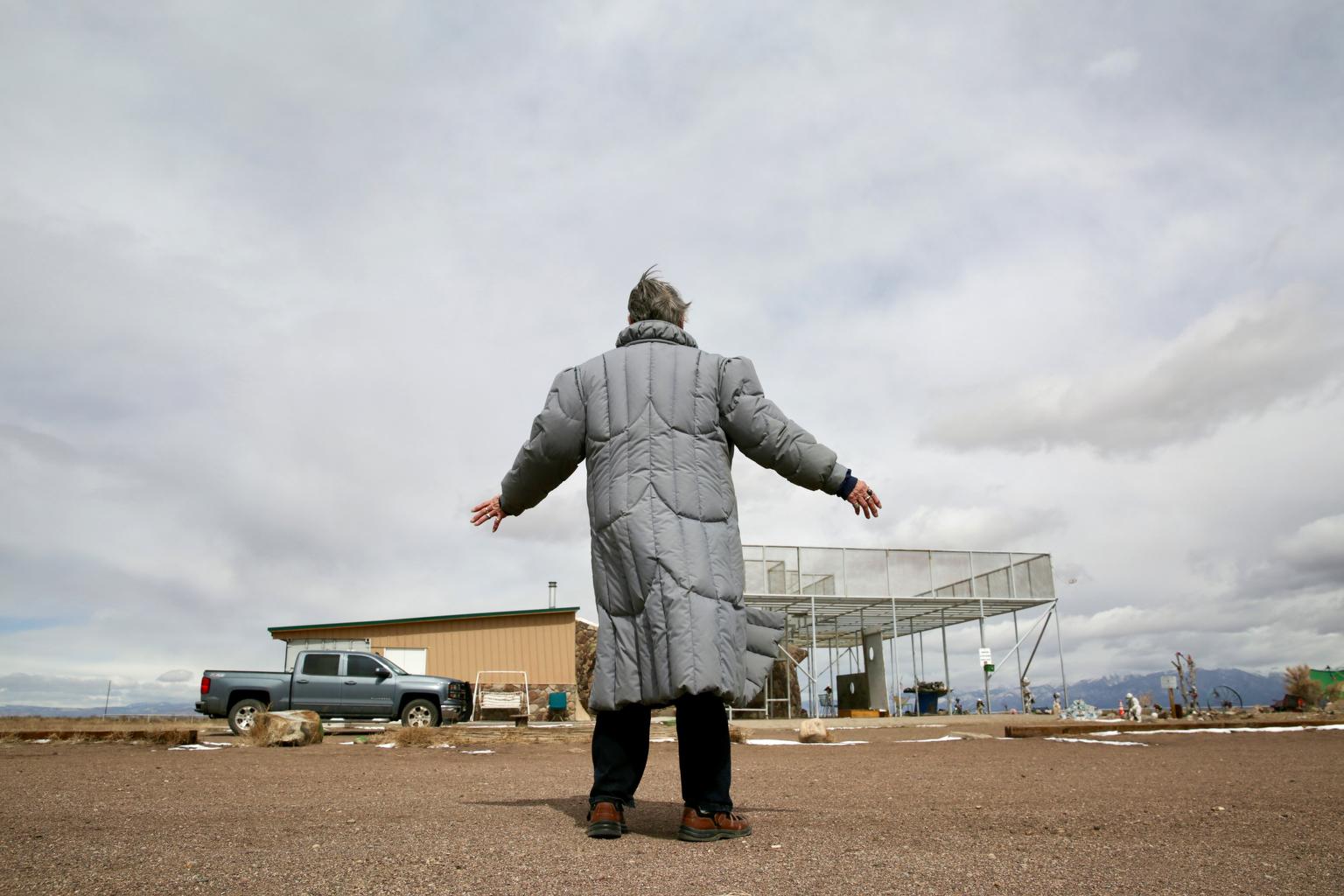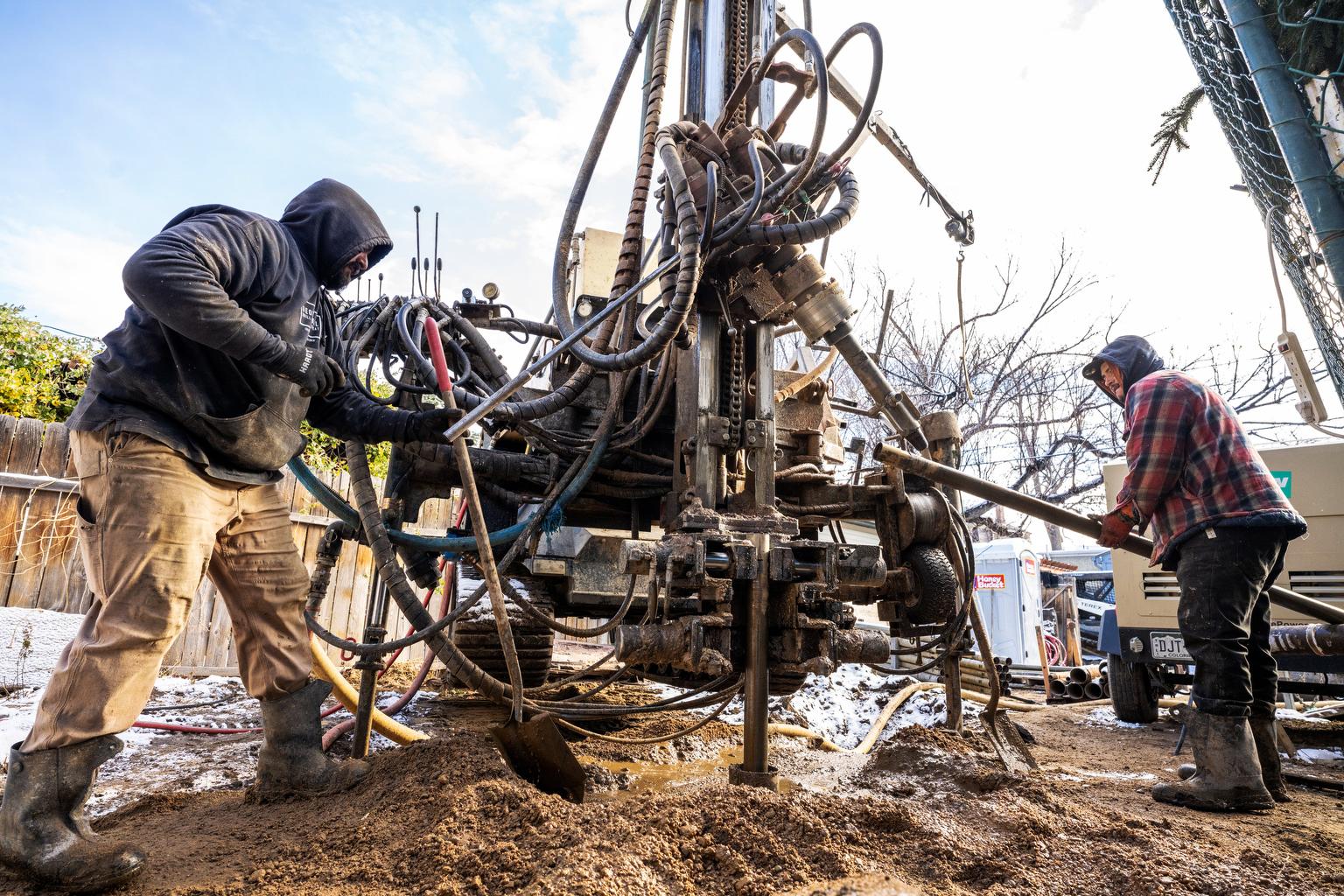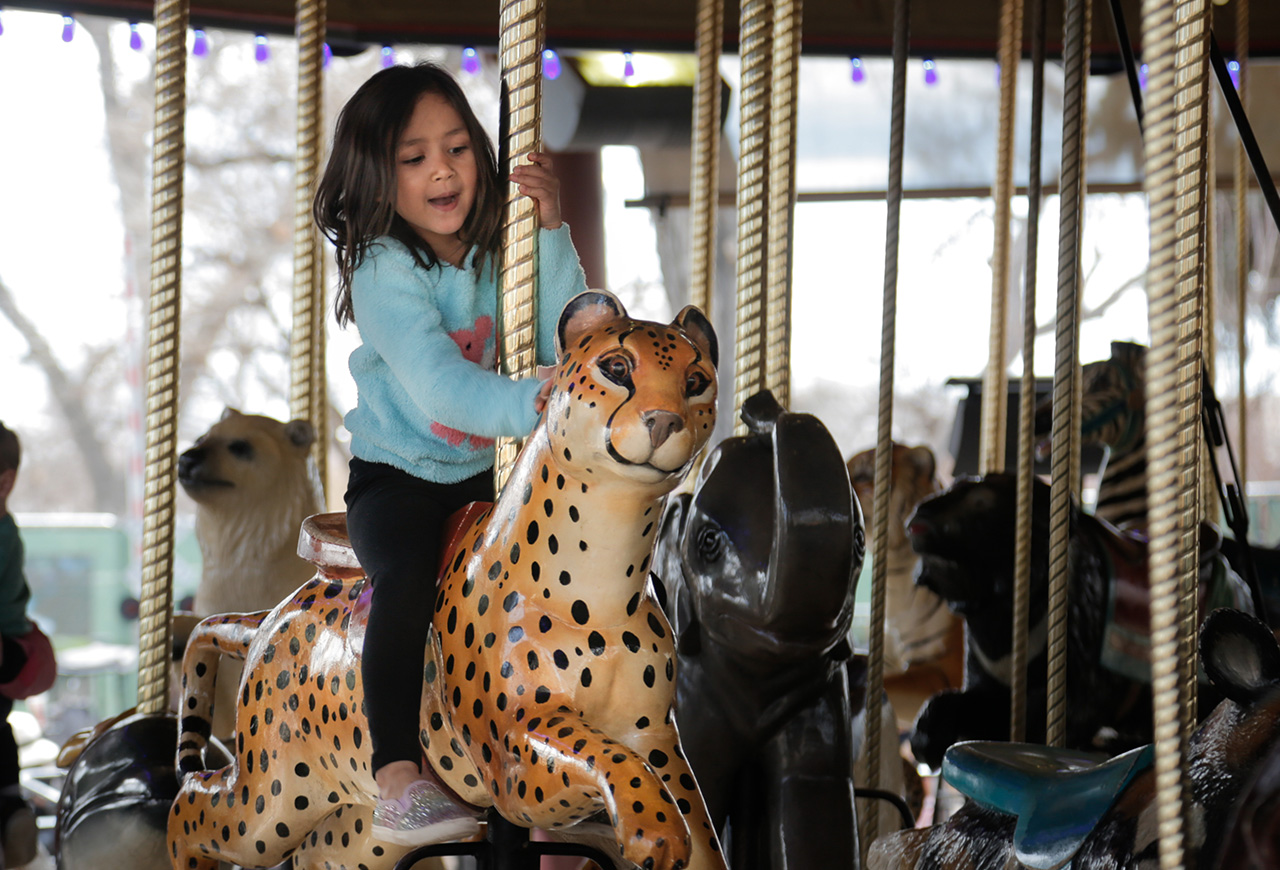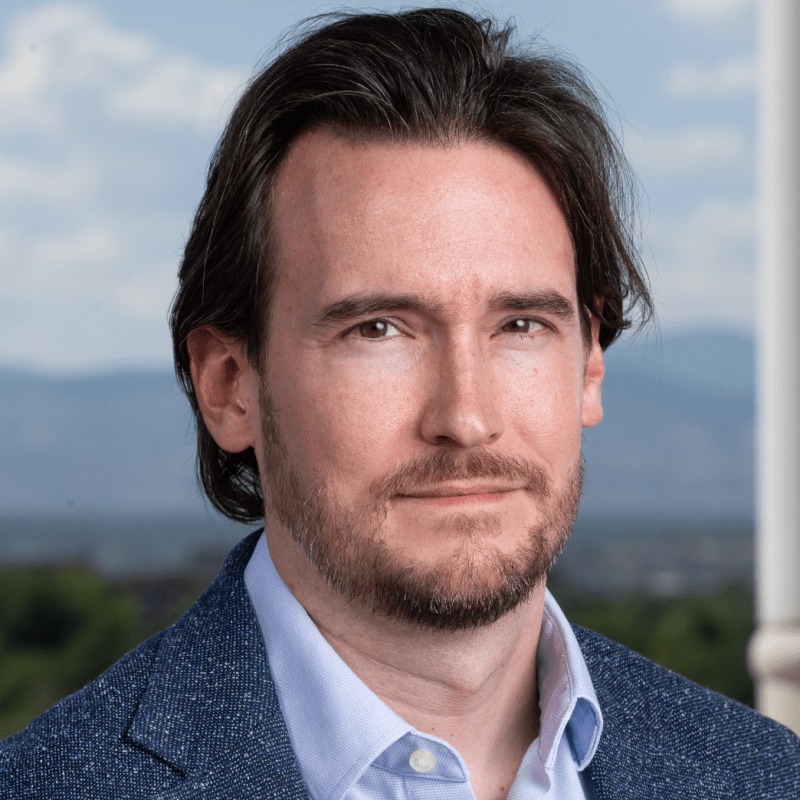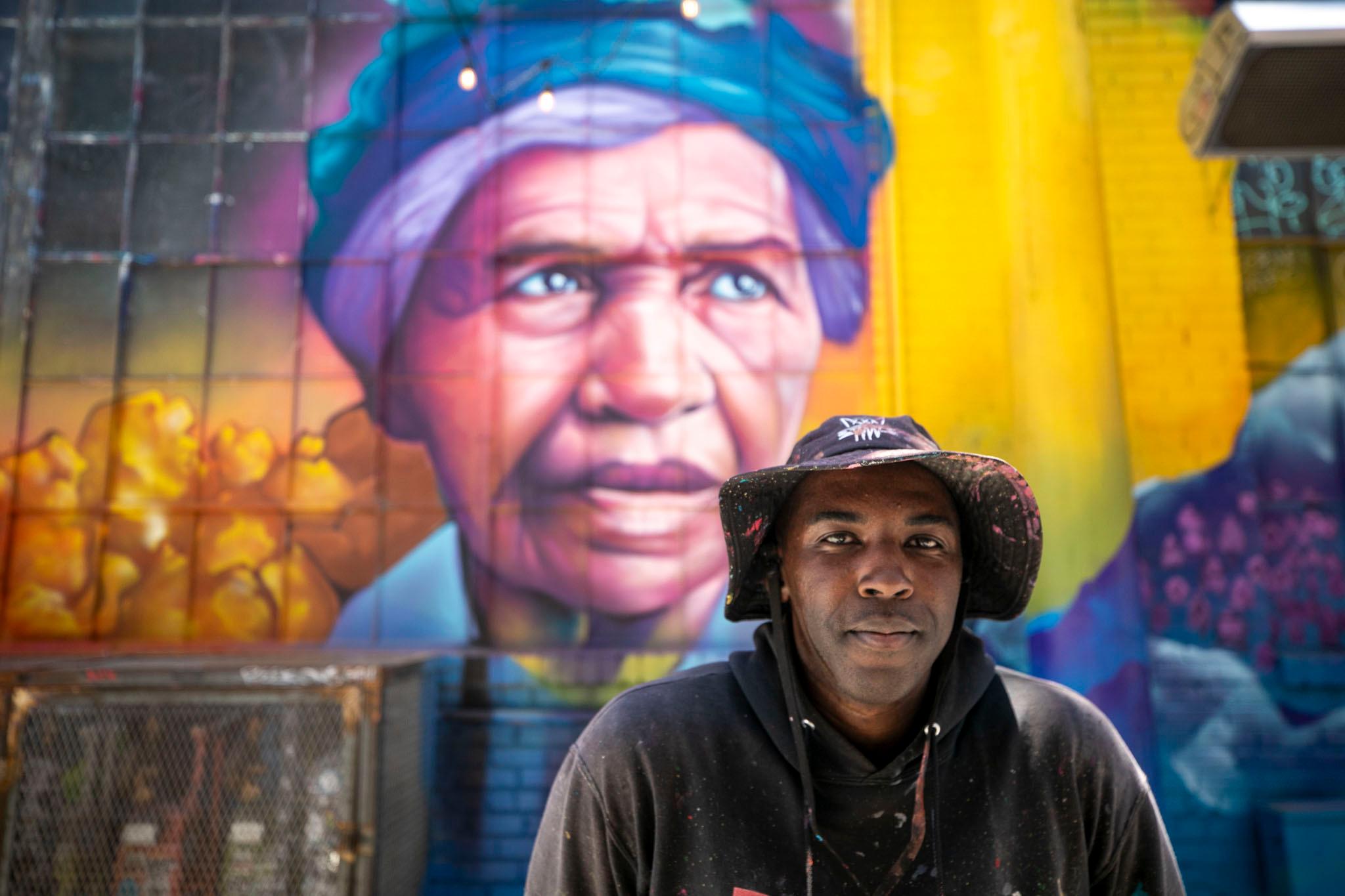
On a recent 90-degree day, the Denver-based artist Detour is dressed in paint-splattered shorts and a top, and a paint-splattered hat to shield his head from the sun. He’s near a huge mural he recently completed in an alleyway on the back side of a wine bar.
He’s one of more than a dozen artists around the country who are part of Absolute Equality, a national public art initiative where the director commissions artists from major cities to create Juneteenth-focused murals. Already, more than a dozen have popped up in cities including Miami, Washington, D.C., and Dallas. Some of them are on school buildings or cultural centers; the one in Miami is on a soul food restaurant.
The one in Denver’s RiNo district is on the back of Noble Riot Wine Bar. It was completed less than two weeks ago by the 39-year-old Aurora-based artist Detour. Standing in front of the approximately 12-feet tall, nearly half-a-block long creation, he described it as a “timeline.”
“On the left side… a Benin statue, because Benin was known for metal working, and to the sort of interpretation of Clara Brown, who was a freed slave, moved to Colorado looking for family, but then eventually became her own entrepreneur, … to the right of that, I have a landscape that shows Colorado sort of scenery and then I have Darrell Anderson, contemporary artist today but still doing his thing… so it’s kind of like from history into almost now into the future in a way …”
He completed the untitled mural, with bright greens, purples and gold, using latex paint and spray paint in about four days this month.
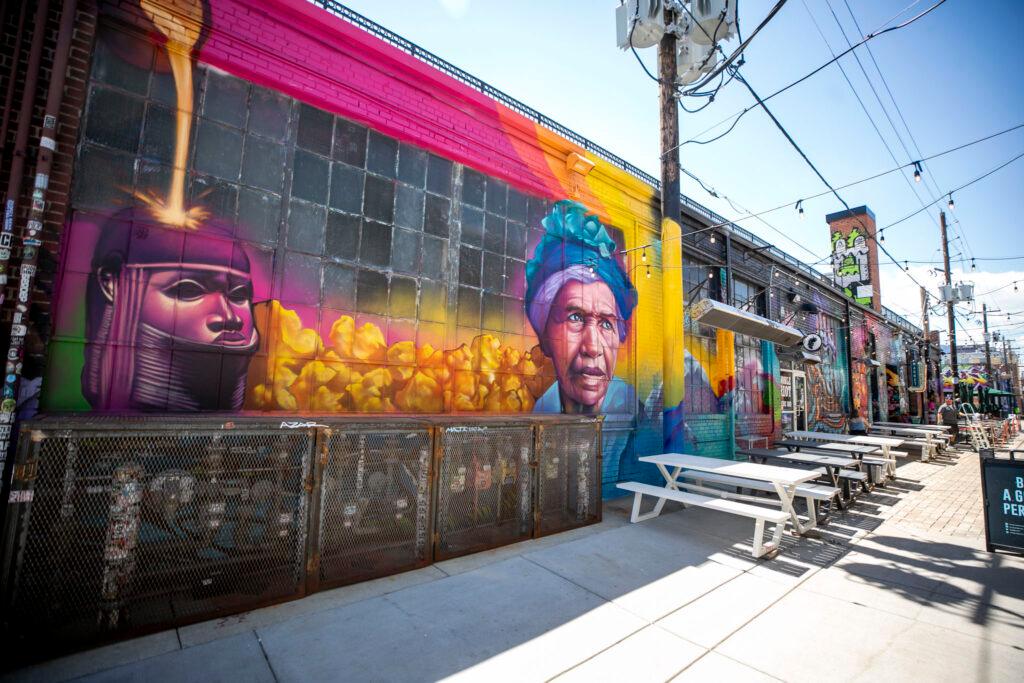
Like his piece, each mural made as part of the project since 2021 reflects on Juneteenth through a local lens. Juneteenth is now a national holiday and commemorates the proclamation issued on June 19, 1865 in Galveston, ordering the freedom of more than 250,000 enslaved Black Texans who didn’t know slavery had already ended.
This week in Atlanta, the artist Fabian Williams, also known as Occasional Superstar, is working on a mural that’s 300-feet long and 15-feet tall on the campus of the historically Black all-male Morehouse College. Reached via Google Meet while he was putting some finishing touches on what he called a “monster,” he said his work is a mix of neoclassical portrait style with touches of Norman Rockwell and futurism.
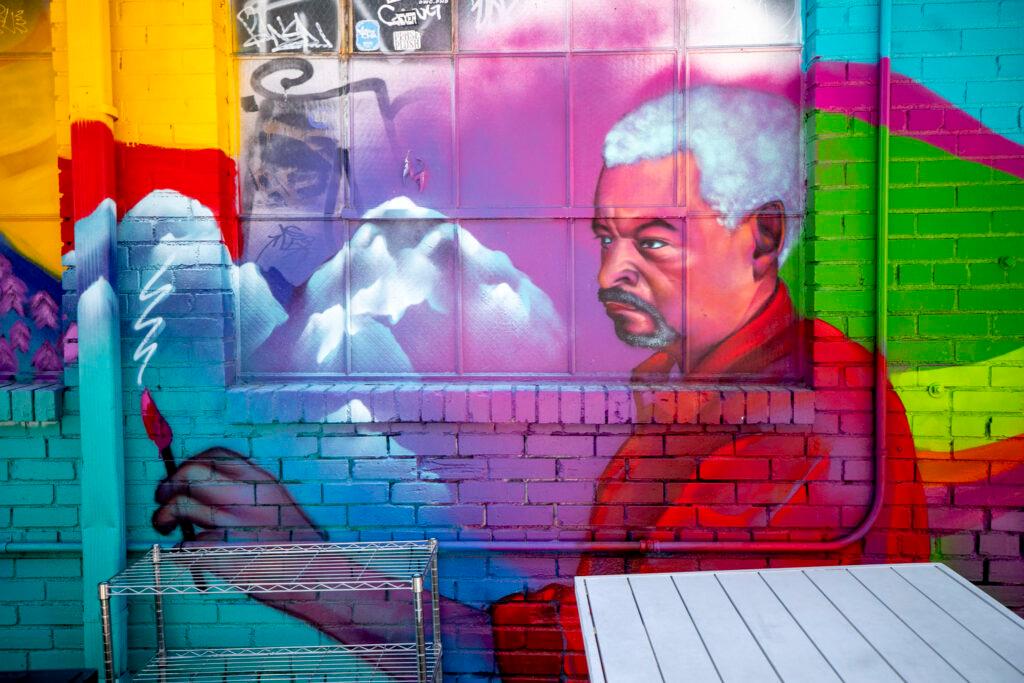
“The color scheme is all over the place. There’s a lot of maroon in there, because that’s Morehouse’s colors. There’s a lot of blue, because of the ocean where the middle passage happened. And there’s a lot of black, because that’s what space is…I really consider this mural to be my thesis on murals. This is everything I’ve learned while doing murals around the streets in Atlanta and across the country.”
Williams said he works full time as an artist, and has been commissioned to do dozens. The subject matter of the Absolute Equality mural contribution he’s making ranges from ancient Egypt to the Middle Passage to Morehouse grad Spike Lee, he said, explaining that he’s working mainly with aerosol paint. Once he’s done, he’ll cover it in $2,500 worth of protective coating, so it won’t get ruined in the sun or rain.
“This mural celebrates our, not our whole story, but a good part of our story, and not just slavery part and the freedom part, but all the things that we’ve done before and after, and what we’re going to do in the future.”

Both of these artists, and about a dozen others, were hand-picked by Reginald C. Adams, 52, a full-time artist based in Houston, the founder of the Absolute Equality project. He specializes in large-scale mosaics, but also works in other media, most of his work appearing outdoors.
“I have a lot to say, and I have found there’s no better place to say what you want than in the public domain on Main Street.” He conceived the project and reached out to the artists to be a part of it. Each artist is given a $10,000 stipend and creative freedom to complete projects in their respective cities.
“We’ve been able to produce over 13 Juneteenth murals in 13 different cities with 13 different artists and 13 different communities over the last three years,” he said. “And it’s just been beautiful to see the mural turn into a national movement. Every single mural is unique to the city, to the community and to the artistic style of the artist that we commission.”
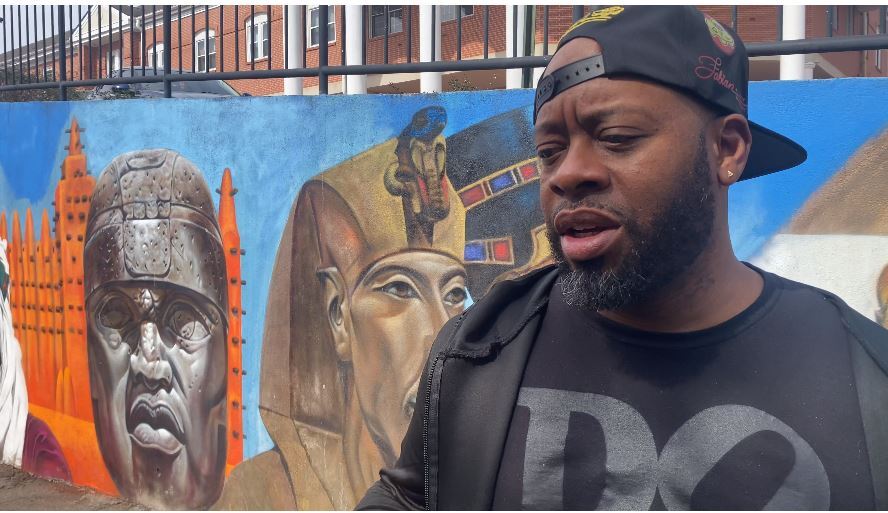
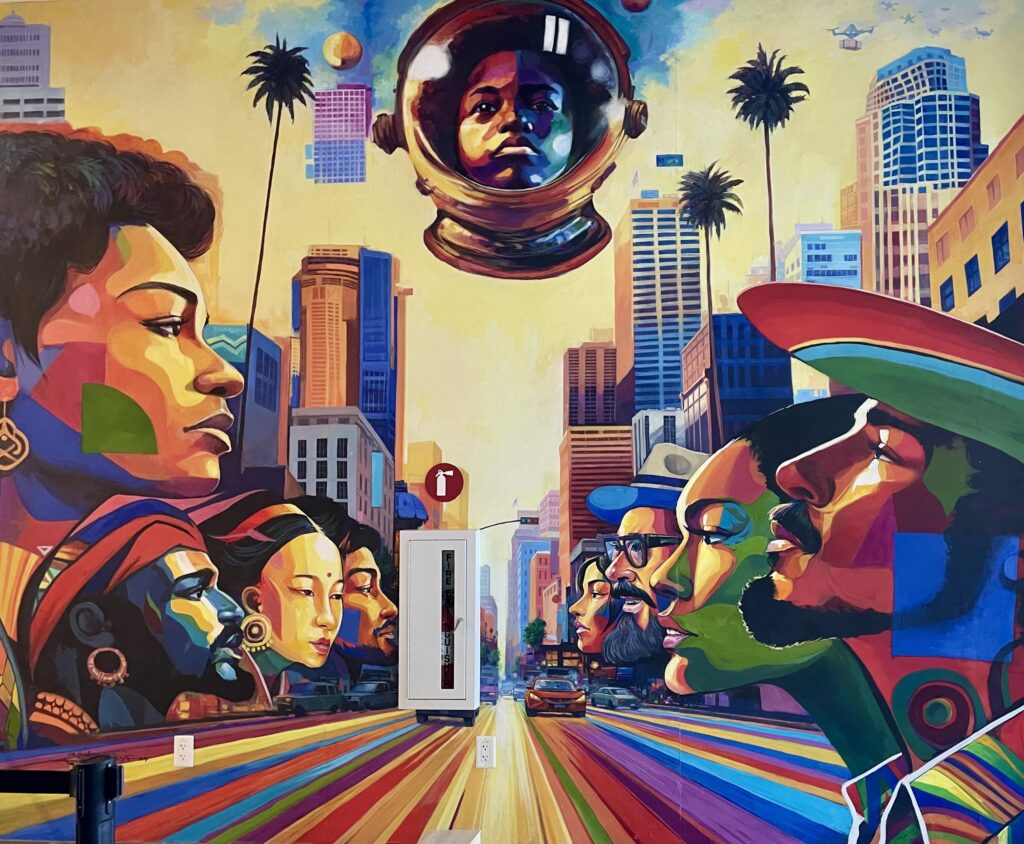

Since the project began, feedback has been mostly positive. In Philadelphia, artist Keisha Whatley, Creative Director of Custom Arts Studio in Philadelphia said 300 people showed up for the unveiling of the mural she worked on there last year. “We had a really big dedication event for it that included drummers and a DJ and performances, singers, and of course food and festivities,” she said, adding that the mural invigorated the corner in a part of town where there’s not a lot of art.
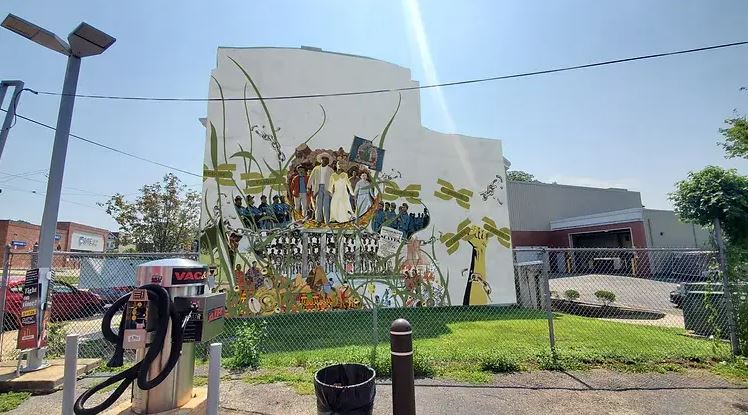
She said the mural is laden with hidden symbols, some of which children hunted for during the dedication. That led to other kids wanting to check it out. “So since then, schools have reached out to ask us to share that with them so they can go by and play scavenger hunt with it and learn the different components of the mural,” she said.
“It's not an easy subject to talk about, so it was really important for us that we created a context that was true to the history, but also celebrated this moment of release and this goal that we're all working towards for: absolute equality.”
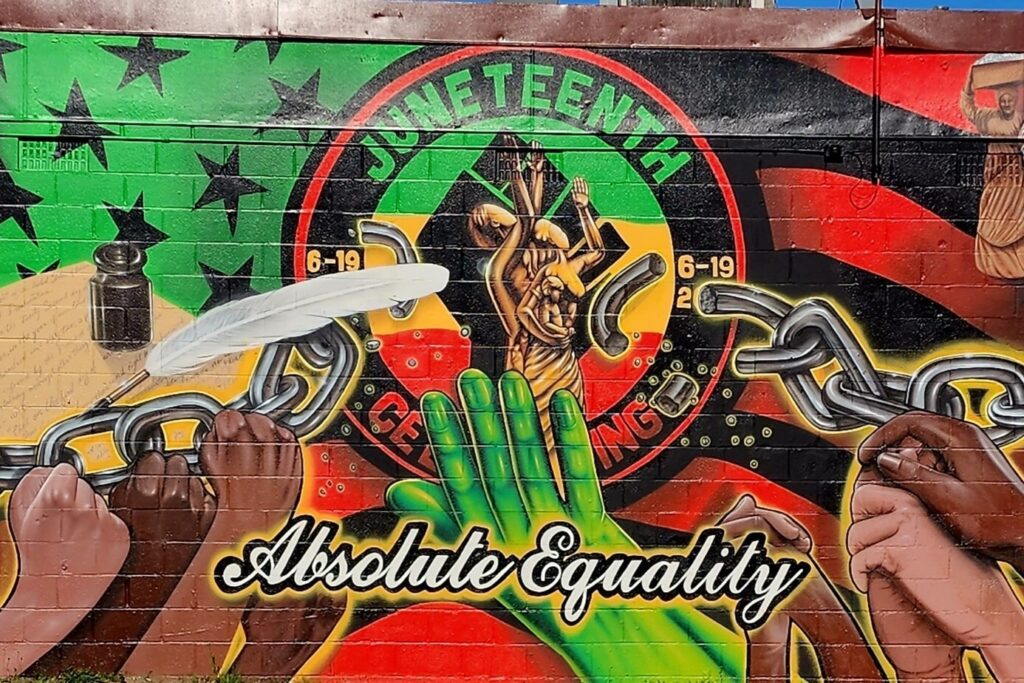
Muralists in other cities are also reporting good receptions. Last year in Detroit, the mural “Absolute Equality” went up on a wall adjacent to the gallery owned by artist Fel’le, who said people can’t miss it as they drive along the street with a speed limit of 25 mph. “Some people were asking what made us do it, and then also some people were saying that they were happy to see it, to spark that conversation in the community,” he said.
But there have been a few hiccups: At the South Dallas Cultural Center in Texas, a mural by JD Moore has been received with positivity since it went up about a year ago, but it’s located on an outside wall that isn’t visible from the street, according to John Spriggins, general manager of the center.
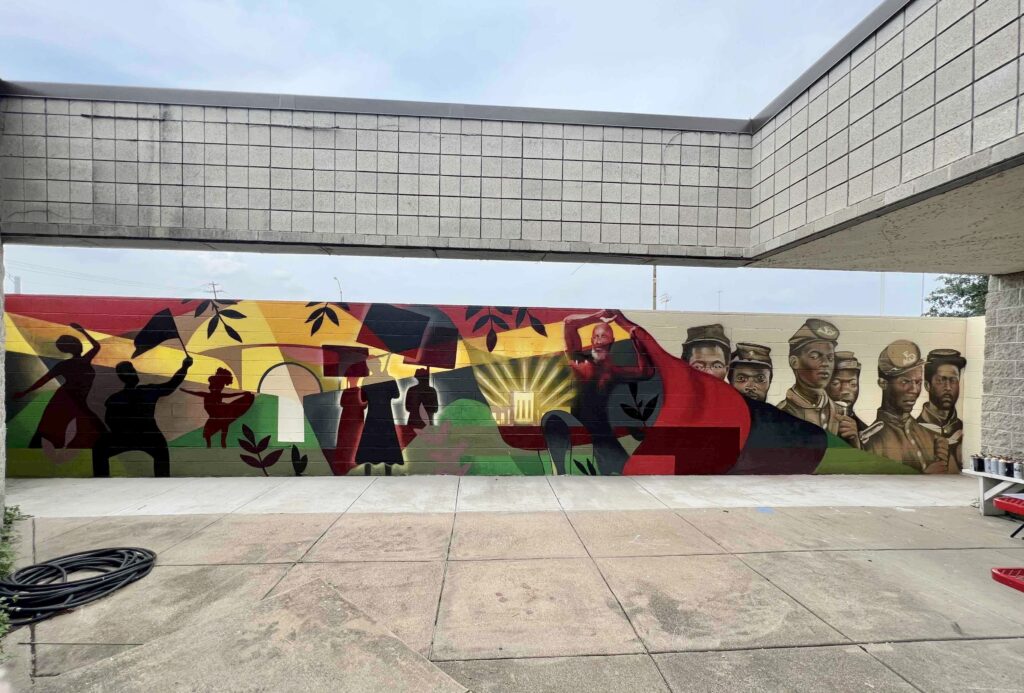
In Galveston, a mural had to be changed after community members petitioned to have any depictions of an Olmec sculpture removed.
However, Adams said the project has mostly been one of connectivity and creativity. Of Colorado’s artist, he said: “I watched Detour’s work for the last probably five or six years when he first hit my radar … he’s done quite a few murals here in Houston, so I knew when the opportunity availed for us to do some work in Denver that Detour was going to be our guy.”

Other artists involved in the project include Samson Abimbola Adenugba, AKA “Bimbo,” a Nigerian socio-political reflective muralist based in Los Angeles whose mural “Strength in Diversity” included LA’s cosmopolitan scenery, featuring palm trees and faces of people of different races, using colors that didn’t necessarily match their flesh tones.
Reached for an interview over Google Meet, the 55-year-old originally from Lagos said he was deeply honored to be a part of the Juneteenth project, which connected him to Americans in a deep, emotional way: “There's no Black American without Africa, if you understand what I mean,” he said. “Everybody, every one of the African Americans is actually brought from the continent of Africa, and me coming here joining forces or connecting, it's like a connecting reunion with my brothers and sisters who had been lost in a war. . . and then being reconnected.”
He said that slavery, which Juneteenth celebrates the end of, came at a high cost to American-born Blacks: “The experience of the African American is the fact that they've been drained off the original culture,” but, he added, “The fact is that we're still brothers and really connected.” His mural, at almost 14 feet wide and nearly 12 feet tall, was recently installed outdoors at a cafe in downtown Los Angeles.
Adams is excited to be working with all of the artists. He gave Detour, who finished his mural first, and other muralists plenty of space after providing them some historical context about Juneteenth to use for reference in creating their murals. “The best work you’ll ever get from an artist,” he said, “is when you give them the freedom to create.”

